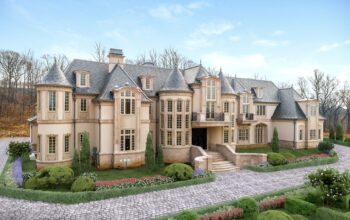Courtesy Halala Kanda The son of a wealthy plantation owner built a home in Sri Lanka in 1912 to woo his bride.
In 2011, four friends bought the crumbling remains of the once-grand villa for $430,000.
They now rent the mansion out to guests for $1,300 a night.
It was in 2010 that interior designer Dean Sharpe first glimpsed the crumbling mansion on the Sri Lankan hillside near Weligama. In its glory days, Halala Kanda — known as Firefly Hill to locals — played host to guests such as Emperor of Ethiopia Haile Selassie and legendary Australian cricketer Keith Miller. The son of a wealthy plantation owner built the mansion in 1912 to woo his bride.
But when Sharpe first saw it, the tired relic with its crumbling plaster looked as if it had been lost to the jungle. The coral and stone walls had collapsed, bats were roosting in the rafters, the windows were boarded up, and a tree was growing through the roof of the entryway.
“It was a ruin of what it once was,” Sharpe told Insider. “But we walked in and fell in love with it.”
In 2011, he bought the crumbling, 100-year-old villa and two acres of land for $430,000 along with his friends Jenny Lewis, Richard Bleasdale, and Bentley de Beyer.
Sharpe was tasked with creating the look of the villa, which wrapped around an open-air courtyard. The group commissioned architect Ross Logie to bring their dreams to reality.
Work began in December 2012, a full 100 years after it was built. “We wanted it to look as authentic as possible,” said Sharpe. “But we didn’t want to create a pastiche of what went before.” Maintaining the bones
Because the friends wanted to keep as much of the original building as possible, they considered every piece of the home carefully before scrapping it: “We didn’t do a big bonfire and burn everything. Each window frame and roof joist was carefully removed and stacked,” said Sharpe.
There were certain parts of the villa they couldn’t hold onto. The grand entrance was crumbling and the tiled roof of the kitchen wing had caved in. Termites had attacked the plaster, which meant the builders had to scrape the walls back to the original coral and stone structure.
“The demolition took four months to complete,” said Sharpe. “The builders were concerned as they needed to get the tarpaulin on the roof to protect it from the monsoon season.” He declined to share how much they spent on renovating the property.
Sharpe replaced the roof with white corrugated iron to reflect the heat and give the home a contemporary look. It also helped monkey-proof the roof: “The tiles had been replaced in the 1950s, so they weren’t turn of the century. We needed to protect it as it’s a bit of a monkey freeway,” Sharpe said. Modern additions Previously, the well in the garden had been the villa’s only source of water, but the friends arranged for it to be connected to the local mains. They […]





